Our drive through the northern Tuscan countryside came too late in the year to see the endless fields of sunflowers. No matter. This is Tuscany. Our path wound through two hilltop villages, nee city states, whose medieval fortress walls now deflect more wind than marauders.

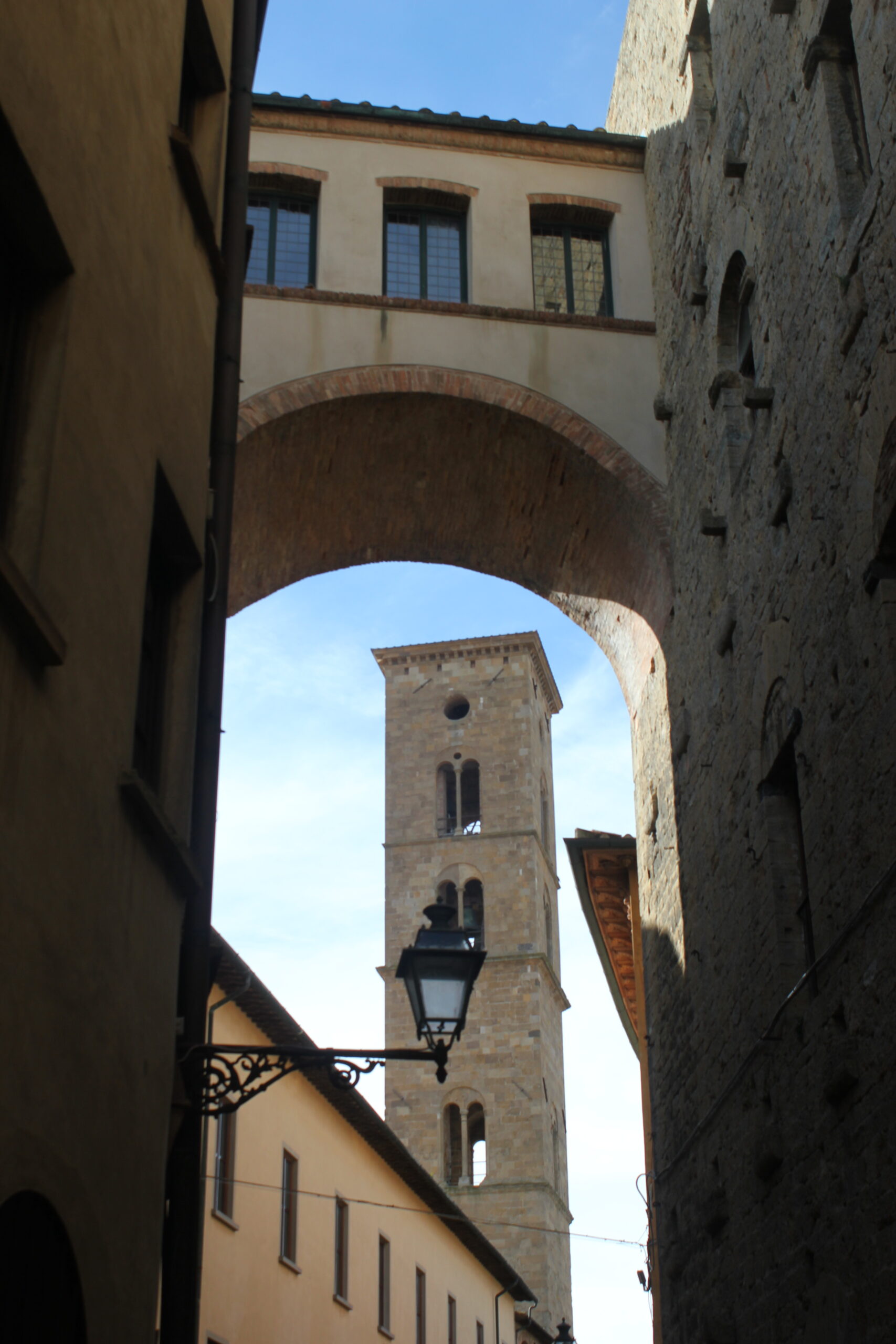
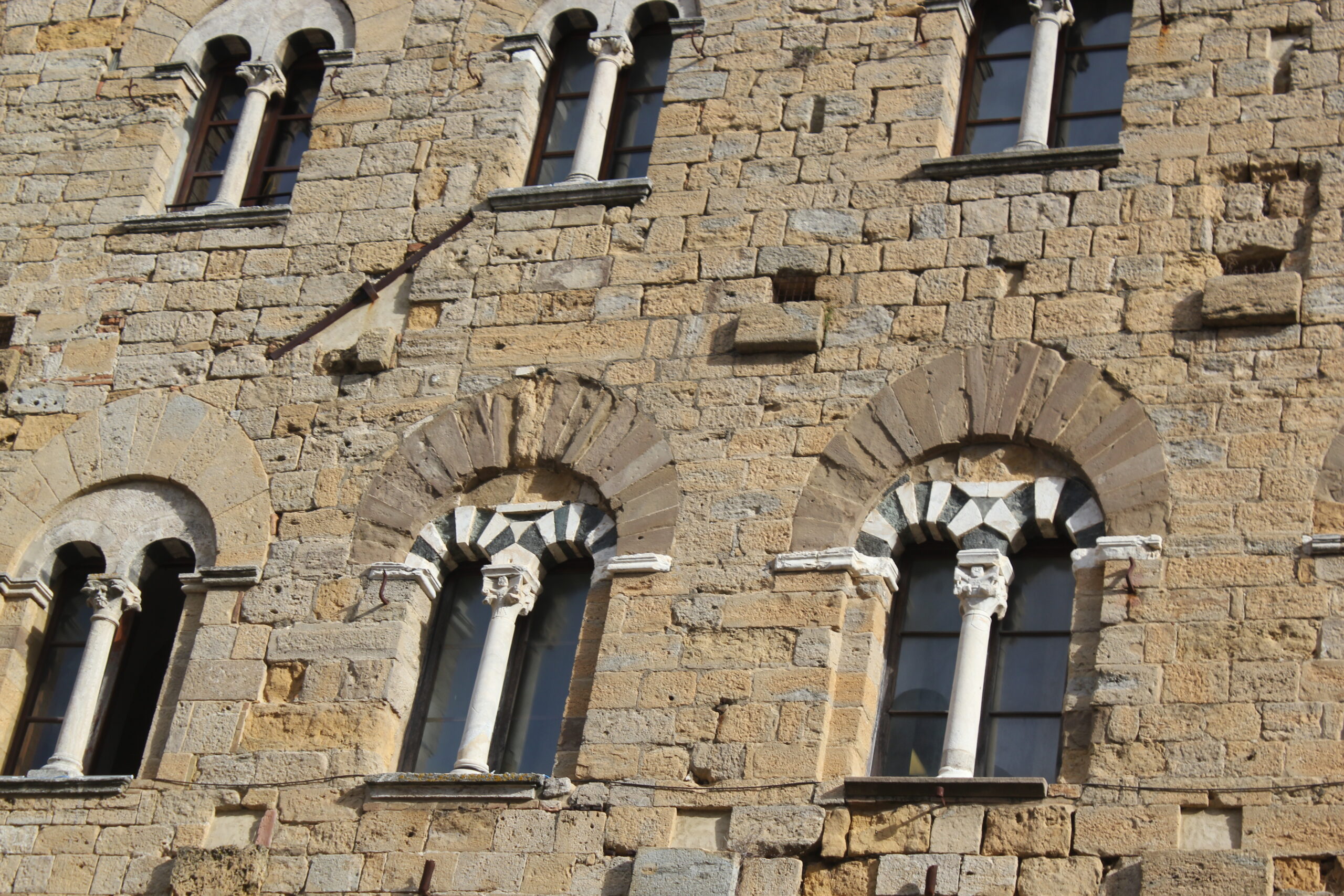
Volterra, built by the Etruscans more than 2000 years ago, served the region as a strategic trading center. The Etruscans were artisans who eventually succumbed to Roman warriors, who borrowed Etruscan technology. For example, Roman arches are Etruscan design. Volterrans claim their 800-year-old city hall is the oldest in Tuscany, the model for Florence’s Palazzo Vecchio.
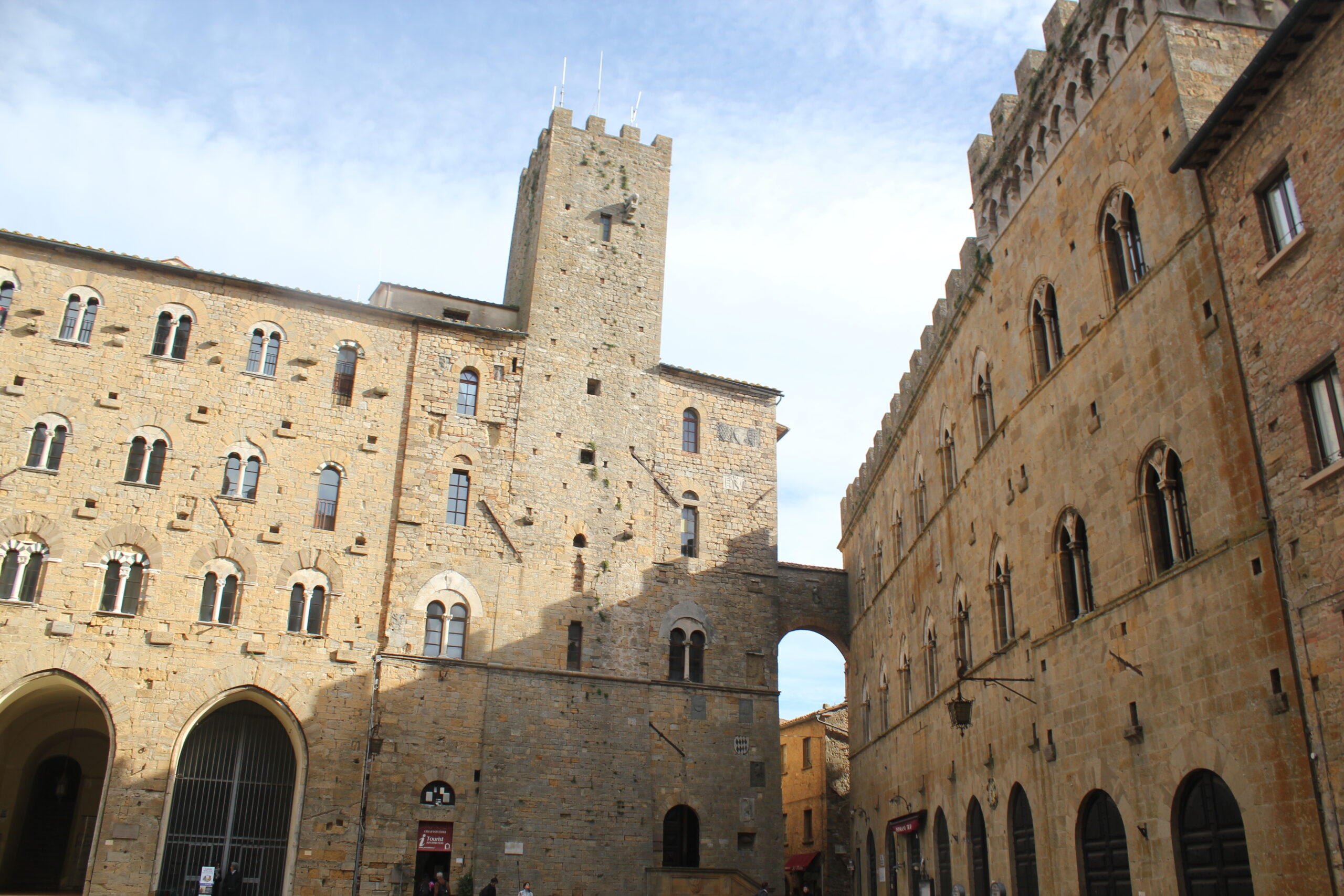
To the north, the Alps are just out of view, hidden by the Apennines, whose mountainsides seem snow splattered. But what appears to be snow is white marble. These mountains contain 37 grades of marble, including the lesser-grade Carrera preferred by Michelangelo for carving.
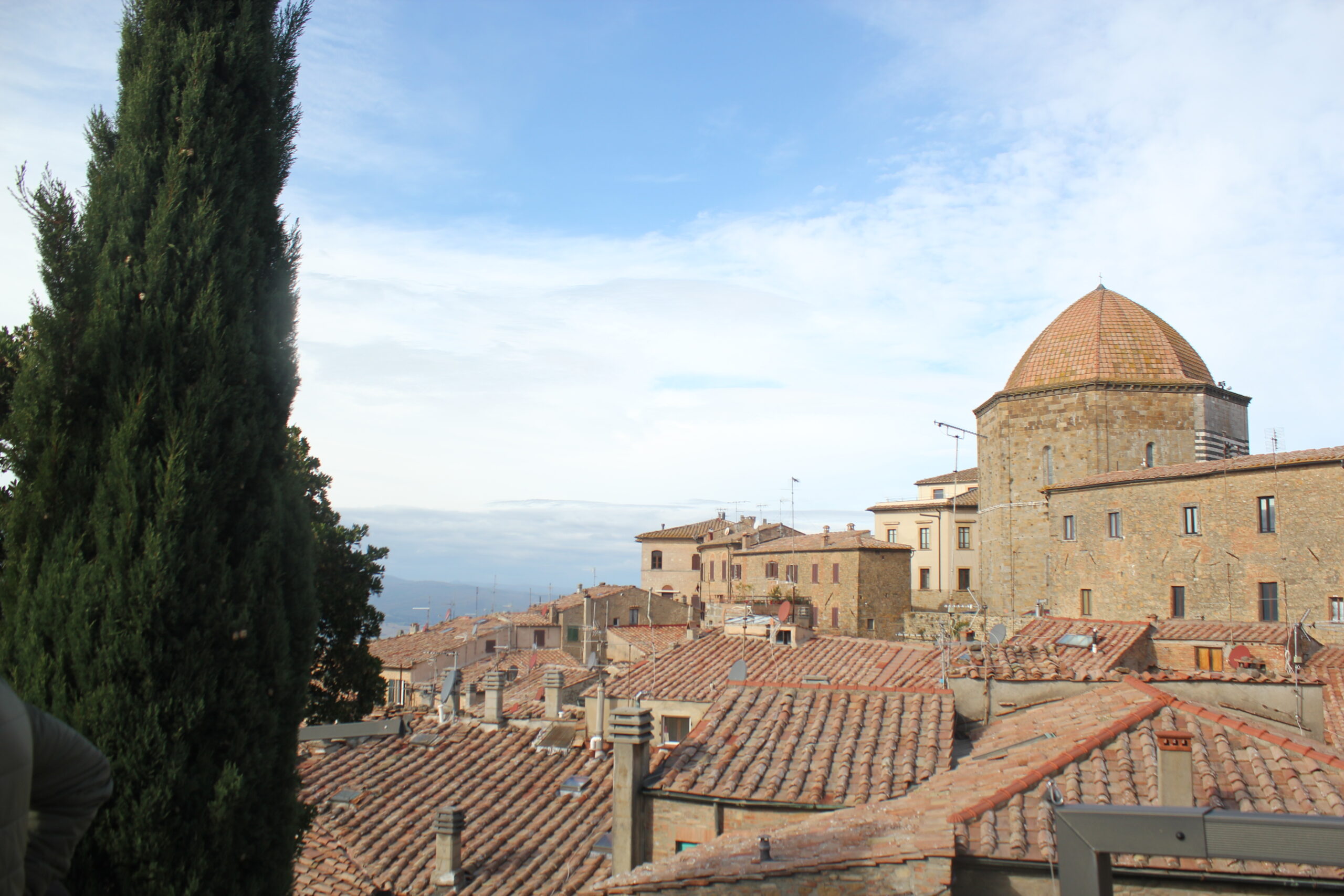
Rows of poplar trees are planted to produce paper. Cypress trees, tall and slender, take their time—500 years–to mature. The umbrella pines produce pine nuts. During a 1980s freeze, 90% of the olive trees were killed.
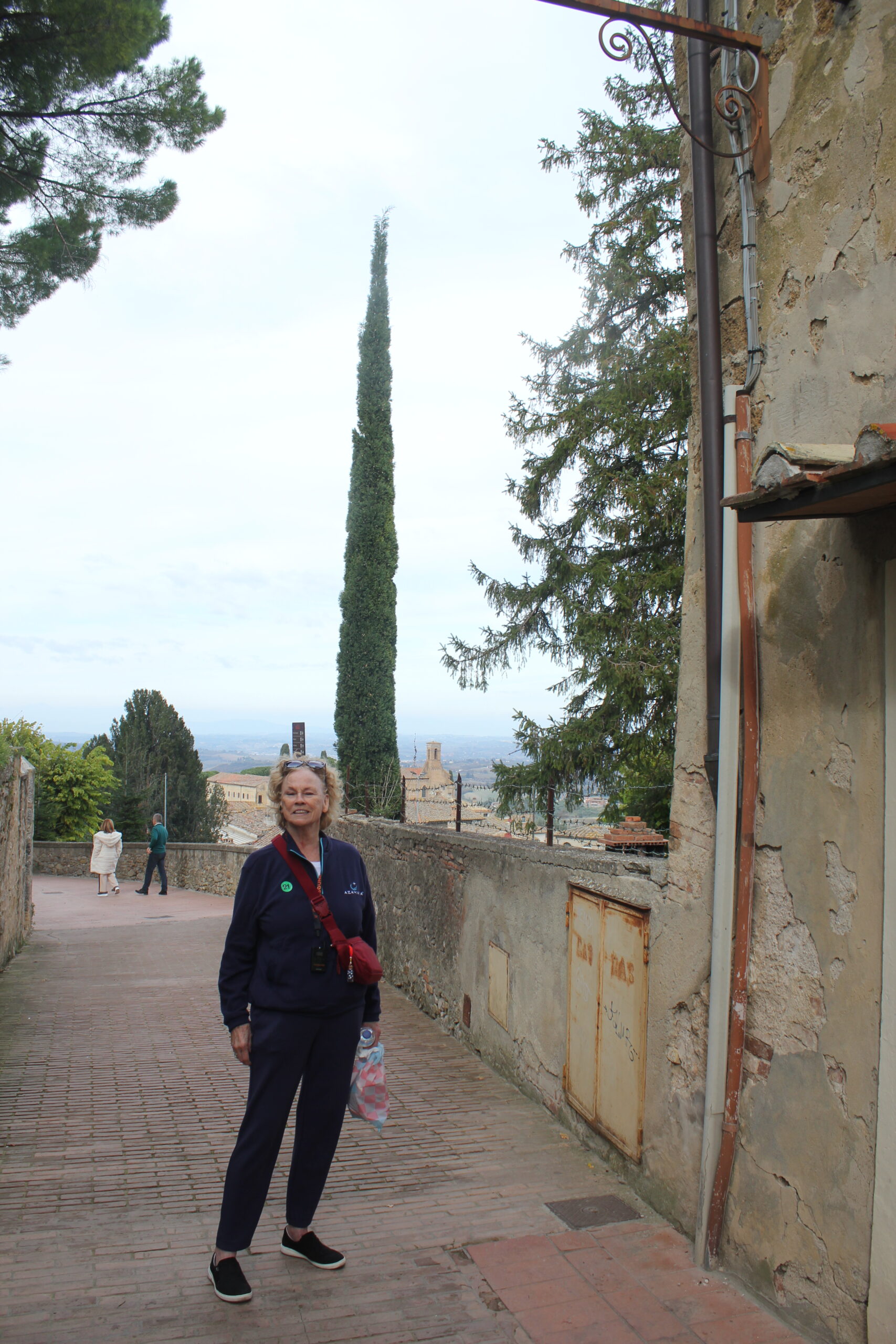
San Gimignano, also a historic trade center, once boasted 72 towers. But during the 14th Century Florence began flexing its muscle, dominating San Gimignano, razing all but 14 towers.
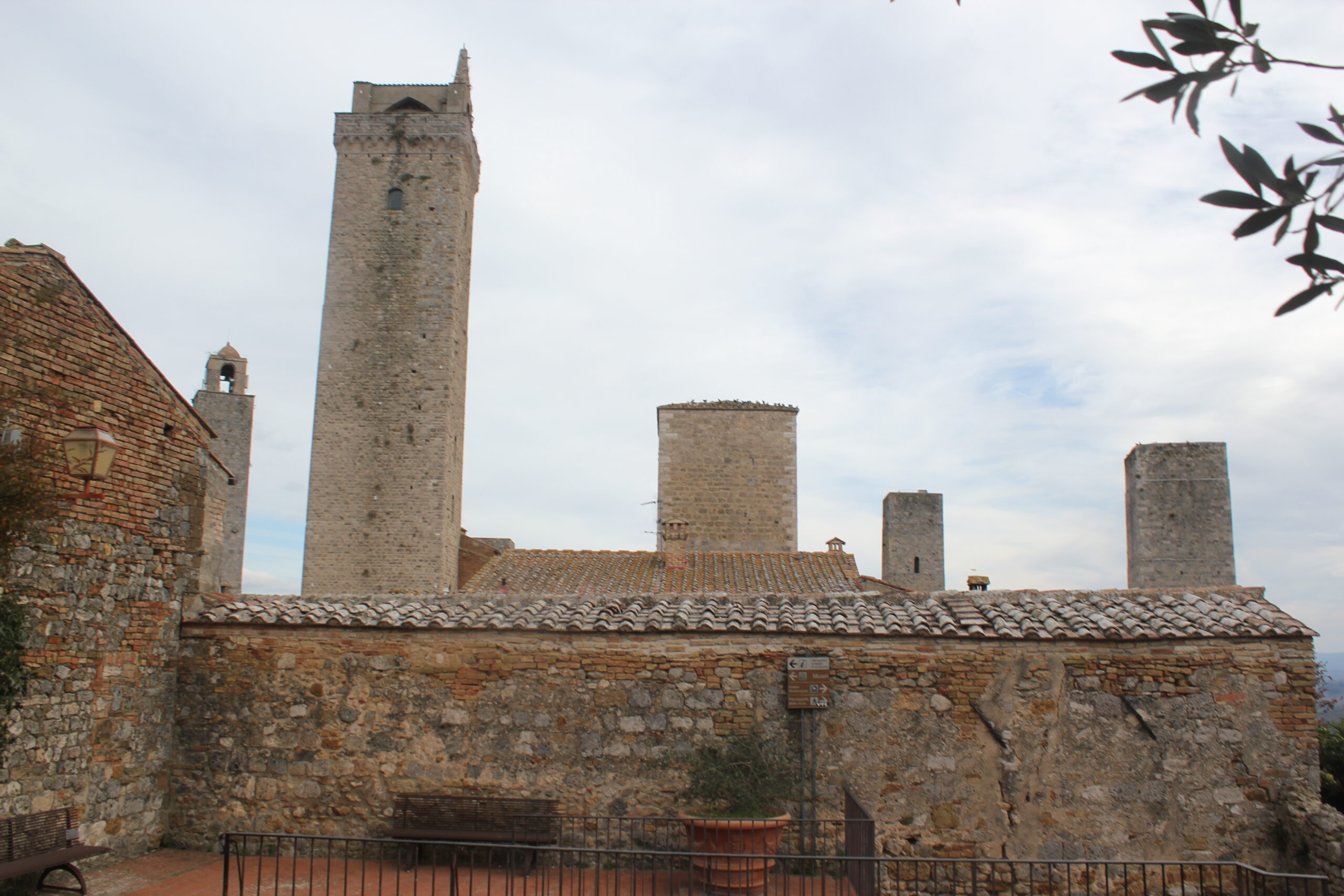

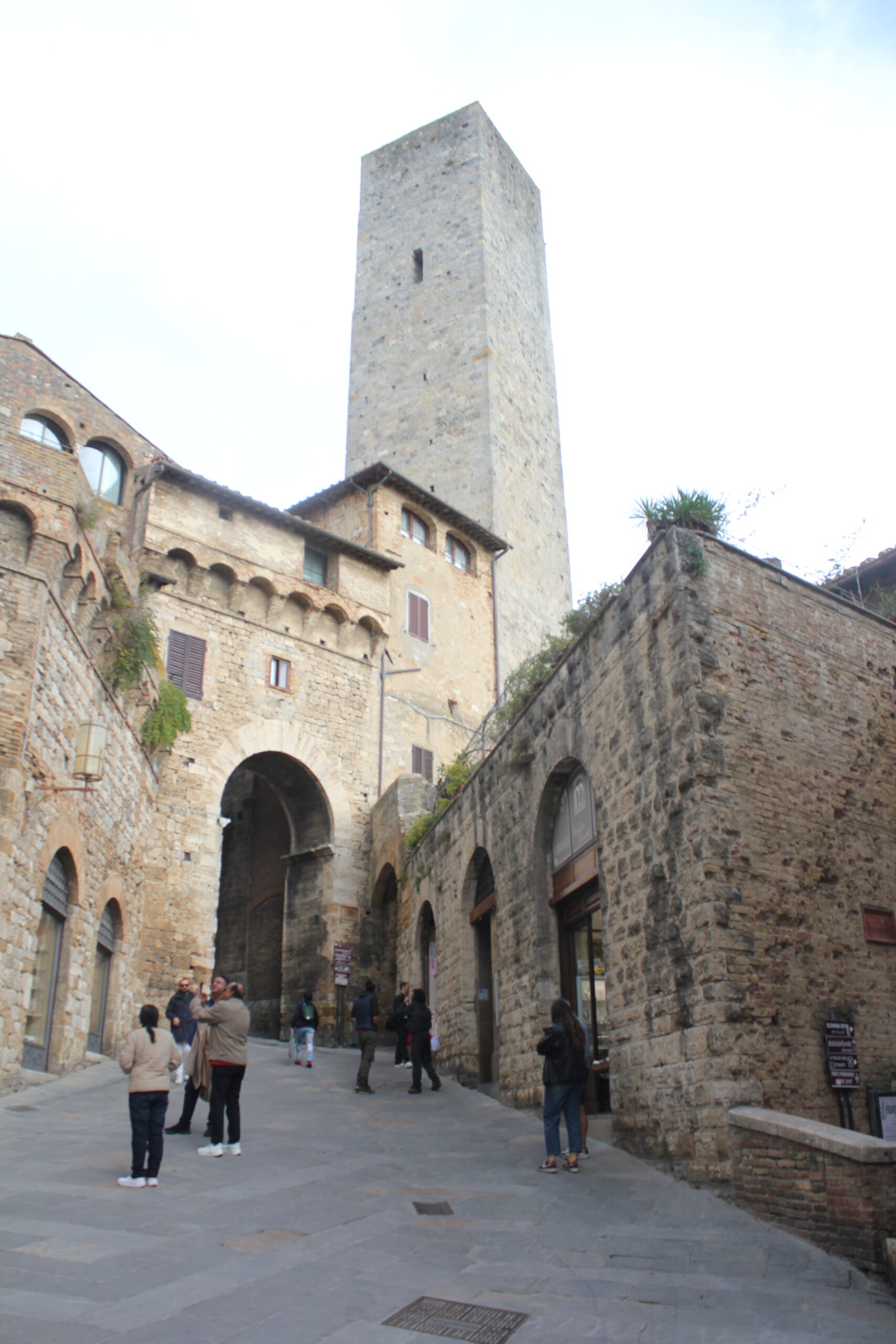
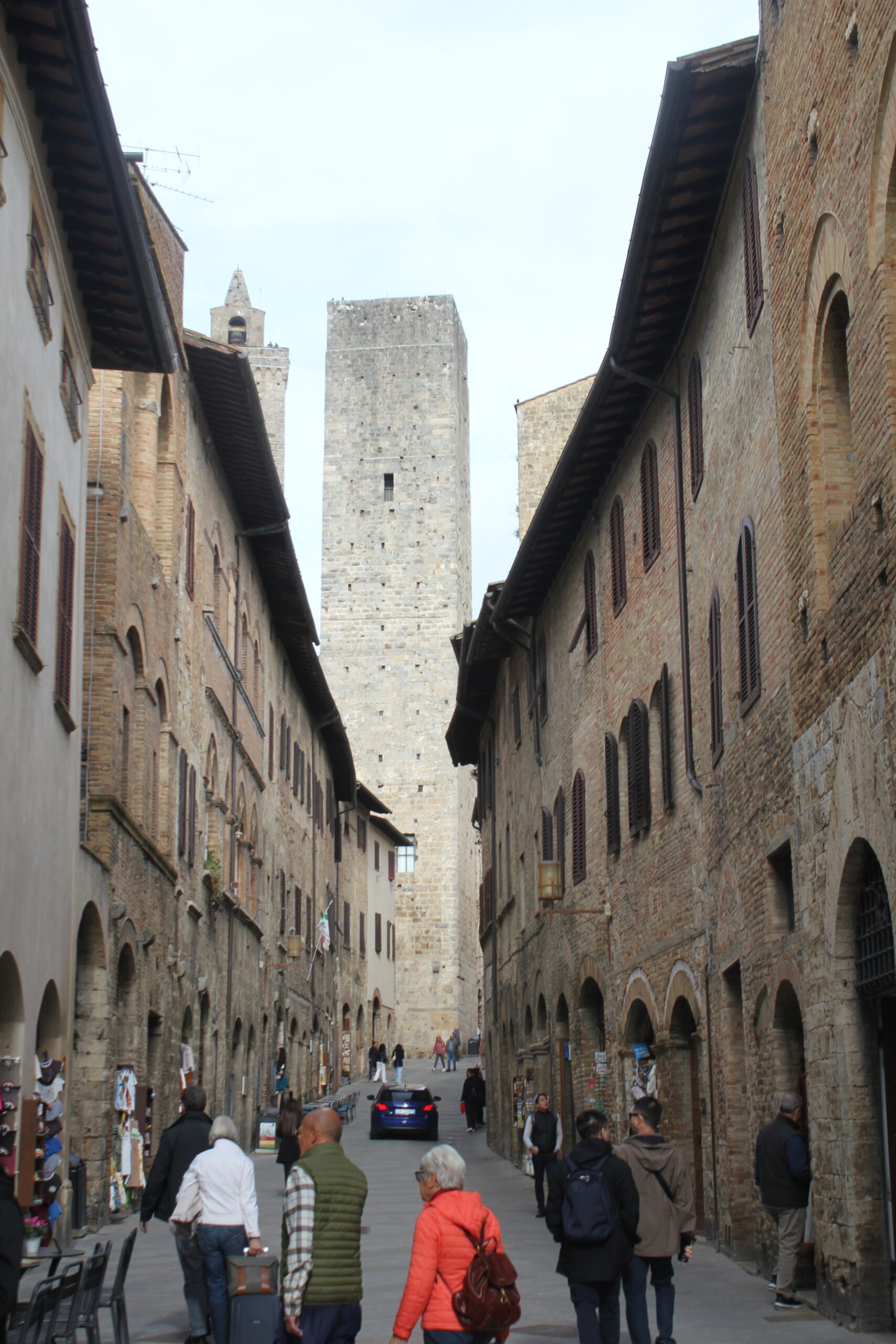

The result is that San Gimignano, frozen in time, looks like a beautiful stone pre-renaissance postcard. Lunch at Tenuta Torciano Winery was a lesson in Tuscan food and wines.
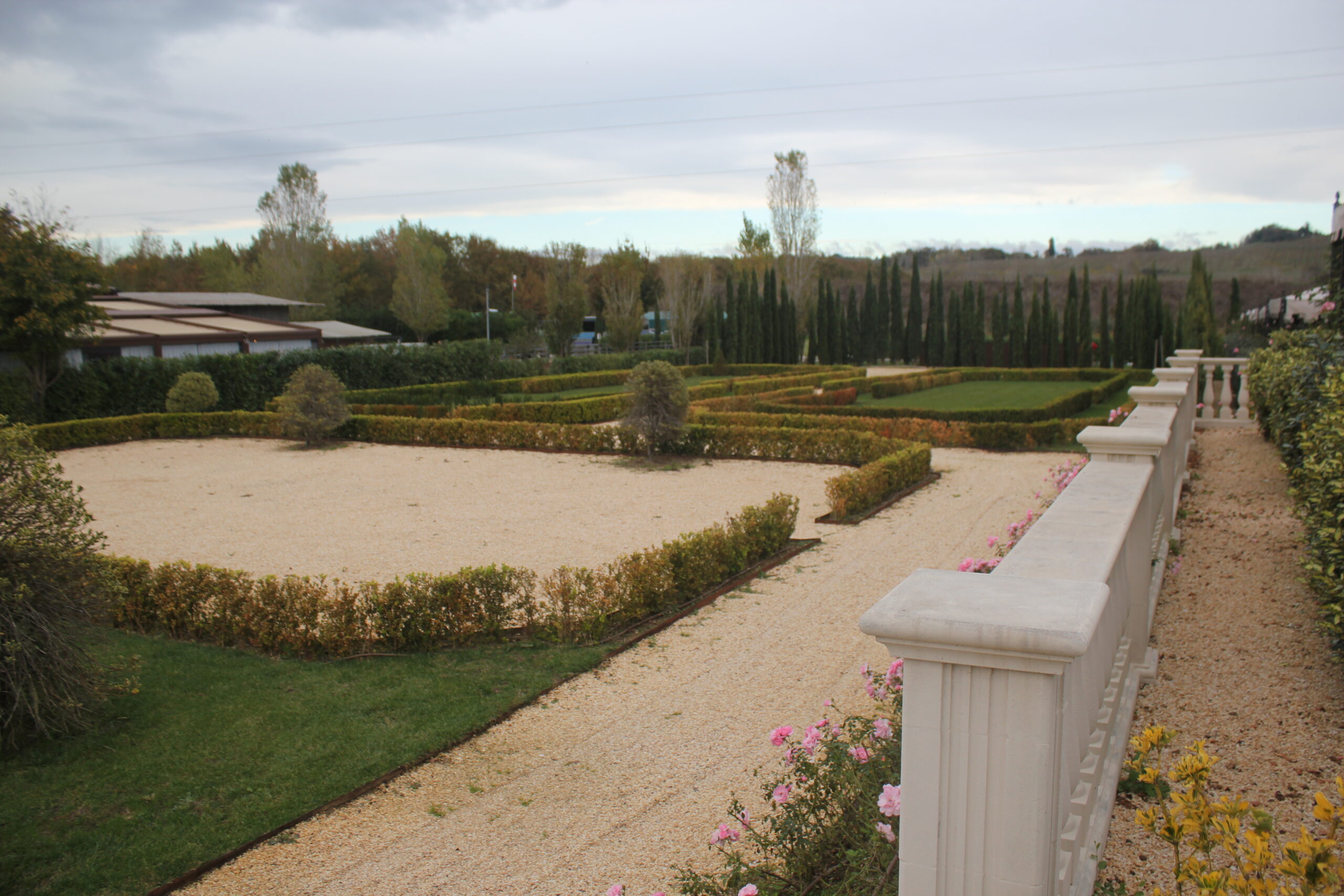
Share this Post
